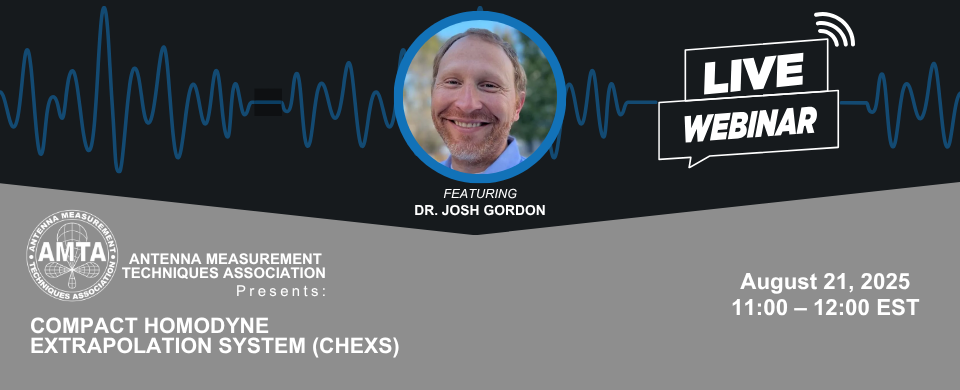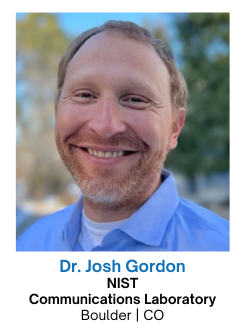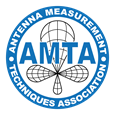2025 AMTA Webinar: Compact Homodyne Extrapolation System (CHEXS) (Aug. 21)

Title: Compact Homodyne Extrapolation System (CHEXS)
Speaker: Dr. Josh Gordon
Date: August 21, 2025
Time: 11:00 am – 12 pm US Eastern Time
Gain extrapolation antenna test ranges have been in used for over 5 decades. Conventional gain extrapolation ranges require long chambers and facilities to accommodate the Fraunhofer distances required to measure the direct signal between two antennas and filter and fit measured data to the gain extrapolation coupling equation. Furthermore, conventional gain extrapolation ranges require large amounts of data to be acquired through an automaton infrastructure that coordinates linear positioner movement at fractions of a wavelength with RF measurements. Here, we present on a new kind of gain extrapolation antenna range, the Compact Homodyne Extrapolation System (CHEXS), that is significantly more compact and can achieve absolute antenna gain measurements with uncertainties < 0.1 dB with as few at 10 data points compared to conventional ranges. This new type of compact gain extrapolation range achieves these beneficial attributes by measuring the homodyne signal produced at close proximity between two antennas. The length requirements of the CHEXS are 3 to 6 times shorter than conventional gain extrapolation ranges when three antennas are used and can be configured for up to 12 times shorter when one antenna is used, allowing for even more compact test facilities to be realized. The compactness of the CHEXS also helps improve signal-to-noise and address unwanted influences of multi-path chamber reflections which occur at larger antenna separation distances. For example, with respect to typical gain extrapolation range length requirements to measure standard gain antennas, the CHEXS can measure true far-field antenna gain with less than 1.5 meters antenna separation compared to over 5 meters in a conventional gain extrapolation range.

Dr. Joshua A. Gordon is a physicist and leader of the Antenna Project at NIST, he is an Edmond S. Gillespie Fellow of the Antenna Measurement Techniques Association (AMTA) and a Senior Member of the IEEE. His work being published in book chapters and over 100 research papers for the advancement of antenna measurements and electromagnetic metrology. He is also inventor on several patents related to spatial metrology technologies with applications to antenna alignment and robot and robotic antenna range calibration as well as Rydberg atom based electric-field sensing. Dr. Gordon’s work in robotics for use in mm-Wave antenna measurement applications was recognized by the US Department of Commerce, receiving the 2016 US Department of Commerce Silver Medal for work on developing the Configurable Robotic Millimeter-Wave Antenna Range (CROMMA). Dr. Gordon’s work in Rydberg atom-based sensors has also been highly recognized receiving the 2023 Department of Commerce Gold Medal and highest-honor Ron Brown Excellence in Innovation Award.
About AMTA Webinar Series:
The AMTA webinar series was introduced to highlight latest antenna measurement technologies to the AMTA community. Speakers are selected from the best papers presented at the AMTA conferences.
Members - You can watch the recordings of the previous webinars here.
